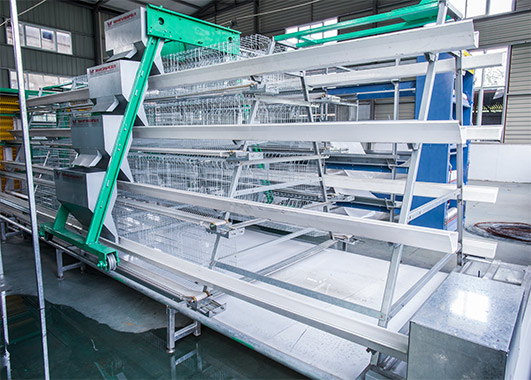How to reduce the cost of breeding by using broiler cages
Aug 13, 2019
When farmers use broiler cages for cultivation, the initial investment is large, especially for large-scale farmers, which require more automation equipment, but these equipments are necessary and can be used for a very long period of time. In addition, the feed is a large expenditure, so how should farmers raise the cost of raising the chickens while keeping the chickens healthy? Nowadays, broiler cage manufacturers have a few ways to reduce costs.

1. Adjust the feed formula: In actual production, the peak of egg production of high-yield chickens can last for more than 4 months, and high-level feed nutrition should be extended to maintain the time. Thereafter, the amount of high protein feed should be reduced according to the decline in egg production rate to avoid nutrient waste. When the flock is vaccinated, divided, transferred, and broken, the vitamin content and protein level in the feed can be appropriately increased. Less feed to the feed. Each feeding does not exceed 1/3 of the feeding trough. Try to let the chicken feed the feed in the trough and then feed it to prevent the remaining feed from becoming moldy.
2. Avoid waste: feed should be less to the diligent, each feeding does not exceed 1/3 of the feeding trough, try to let the chicken feed the feed in the trough and then feed, to prevent the remaining feed from mold and deterioration. At the same time, pay attention to the storage of feed and raw materials, and avoid rats.
3. Correctly break the sputum at the right time: The test shows that the broken sputum saves about 6% of the feed compared to the constantly licking chicken, and an experienced worker can be arranged to break the hen at 7-9 days of age.
4. Eliminate bad individuals: pay attention to observe the chickens, and find that sick chickens, weak chickens, low-yield chickens, and stopped chickens should be eliminated in time. These chickens generally account for 3%-5% of the total flock, and each feed lasts for 100 days. Some chicken farmers often cannot decide to eliminate them, and the result is a waste of feed.
Breeders must have certain chicken raising experience in order to accurately eliminate "white chicken": hens with crowns, pale faces, crown atrophy, and yellow legs should be eliminated; normal hens have more than 3 fingers at the phalanx. The distance between the phalanges and the sternum is more than 3 fingers. When the peak of egg production is over, it is found that the distance between the chicken's phalanx is less than 1.5 fingers, and the crossbow is less than 2 fingers. The hens that are too fat or too thin should be eliminated in time; the abdomen is enlarged and the intra-abdominal product is accumulated. Water or accumulated more liquid, hens that are inconvenient to walk should also be eliminated in time.
Pre:Epidemic prevention management of chickens in broiler cages
Next:How to manage hygiene in broiler cages

